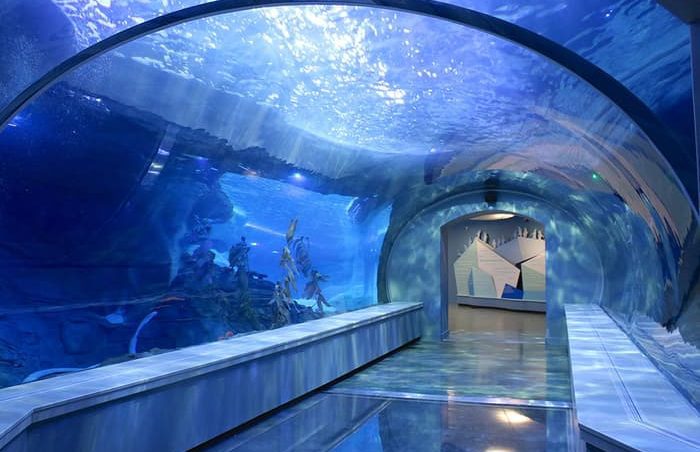Breaking Into the Field of Themed Entertainment Design, Part 4: Engineering & Artisans
Posted in Insights -

By Chris Roy, Director of Creative Design for OTL
We have reached the final part of our four-part series on starting a career in themed entertainment design.
In Part 1, we explained how important it is to understand how essential operations are to this industry.
In Part 2, we discussed the key role of design itself in this realm and the many roles that design encompasses.
In Part 3, we covered a primary factor that can help you succeed in this field: education.
In this blog, we will tackle the final two crucial elements to breaking into the themed entertainment design industry: engineering and artisans.
Engineering
Throughout this series of articles, I have mentioned engineering several times as it relates to architecture.
I have also mentioned that if a purer pursuit of engineering is the objective, the most applicable areas of focus are Mechanical, Structural, Electrical, and Civil. Mechanical is going to be the option if you’re interested in ride engineering, structural is self-evident, electrical is central for control system design, and civil deals with the design, construction, and maintenance of the physical and naturally built environment.
Note that there aren’t many engineering roles focused exclusively on theme parks. An exception is engineers working for the ride/attraction vendors, like roller coaster manufacturers. These vendors employ mechanical, structural, and electrical engineers to create rides and attractions and work with all the major (and minor) theme park operators.
Outside of that niche, almost all the engineering firms working on theme parks will be doing so as consultants, and theme parks will form only a part – perhaps only a small part – of their workload. You will be working on a broad variety of project types, some of which could be theme parks.
Another option for engineers is construction. Project engineers work with project managers at large general contracting firms to oversee the construction of theme parks. While there are several GC firms that do a lot of theme park work, there are none (that I know of) that do theme park work exclusively. This means that if you take this route, in addition to theme park projects you’d also find yourself working on a wide range of other construction project types.
Artisans
The term “artisan” encompasses artists, fabricators, painters, builders, makers, tinkerers, and others who take a hands-on role in making things.
There is a wide range of jobs and approaches for artisans, ranging from wage and salaried employment with companies large and small, to freelance work as an independent contractor, to starting your own specialty niche firm in any number of disciplines. In the latter cases, being the best in a narrow field can be helpful – for example, I know and have worked with one of the largest providers of artificial snow systems for theme parks, as well as artists focusing on 3D projection mapping.
While the major theme park companies do employ some artisans directly, most are hired as subcontractors on a per-project basis. As such, working for theme parks does not typically make up their entire workload (though it may very well make up most of their workload, and certain projects, such as the build-out of a new theme park, may offer full-time or full-time plus overtime employment for years).
Unlike the engineering or construction roles described above, where theme parks may wind up part of a mix that will most likely include many non-themed projects, artisans typically have specialized skill sets that they will be employing for any opportunity needing their expertise.
Why Themed Entertainment Design
I mentioned at the very beginning of this series that I would explain why I prefer the term “themed entertainment design” over “theme park design,” and this is why:
Theme park design is a very precise term – it is literally one role: designing theme parks.
Themed entertainment design, however, is a much broader term, which encompasses theme park design and much more.
Retail entertainment, or retailtainment, incorporates theming. Many food and beverage businesses and events are themed; immersive experiences like Meow Wolf and immersive environments (both real and virtual), zoos, aquariums, hotels, resorts, and waterparks are among the many examples of this theming. OTL even designed and built a themed conference room in a 7th-floor office that looks like you’re in a cave!
When you think of yourself as a themed entertainment designer or an experiential designer instead of a theme park designer, you open yourself up to a much wider range of project types and experiences, which can help you quickly expand your network and experience level. This will create a path for you to grow your reputation in the industry. It will also help you create the most viable options for either joining one of the large theme park companies as a full-time employee or working on theme parks as part of a broader mix of project types – the latter of which may end up being a more interesting, challenging, and rewarding career path.
In summary, the most important advice that I can offer anyone interested in entering the field of themed entertainment design is to focus on the following:
- Identifying and pursuing your specific interests
- Learning the technology that will put you at the forefront of paradigm-shifting changes that are coming to the industry (cutting-edge today won’t be cutting-edge five years from now)
- Differentiating yourself by grasping both the artistic and technical realms, which will make you a far more valuable prospect than individuals with a myopic view and knowledge base
- Understanding that, as fun and interesting as this business is, that’s exactly what it is – a business. The design decisions you make must ultimately make dollars and sense and they must create a valuable return on investment for project owners and investors.